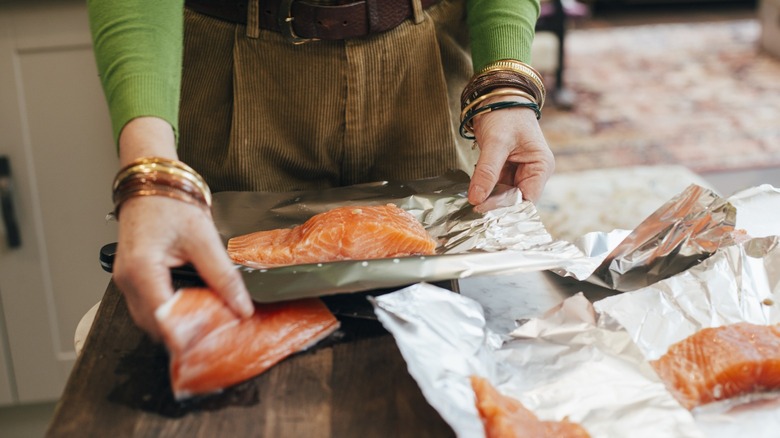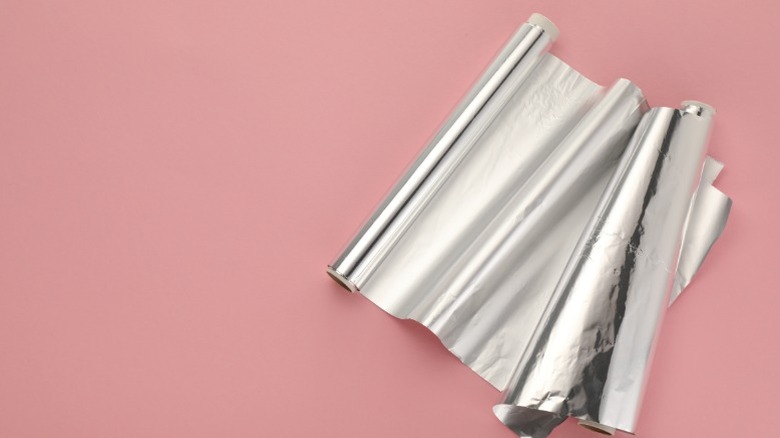Aluminum Foil Has Two Sides For A Reason, Here's Why
Aluminum foil is a kitchen essential that you likely use regardless of whether you consider yourself an expert chef. The material is perfect for lining dishes and trays to prevent sticking or spills and wrapping up your food to keep it warm after it's cooked. But if you've ever taken a good look at a sheet of foil, you may have noticed that it has two distinct sides. As it turns out, there's a reason for that difference.
Typically, one side of the foil is shiny while the other side remains duller. The contrast in sheen is due to the process that goes into crafting each roll of foil. According to the USDA, aluminum foil starts as a liquid alloy of metals — 98.5% aluminum, iron, and silicon. This alloy is rolled very thin and hardens as it passes through the rollers which are chilled by water. In the final rolling, two sheets of foil pass through the rollers at once. This means that only one side of the foil comes into contact with the roller itself — creating the shinier side — whereas the inside remains dull.
This whole manufacturing process is called milling, and it is done to ensure that the foil has the right texture, shape, and properties that make it an essential kitchen assistant. Although it might be cooler if both sides of the foil were shiny, the sheets would break if only one went through the rolling process at a time, making the pairs essential.
There's no right side or wrong side when it comes to uses
While the shiny side might be more eye-catching, that doesn't mean it's better. A common myth about aluminum foil is that the shinier side works more efficiently than the duller side. However, the foil is made out of the same material on both sides, so largely, whichever way you use it, it will have the same effect. This goes for traditional and heavy-duty foil — though non-stick foil does have a right and wrong side (more on that later).
So how does aluminum foil actually work? The material has a plethora of uses in the kitchen and is very effective at conducting heat and ensuring even cooking or baking. The conduction properties of aluminum make it the perfect material to ensure your food stays both warm and moist while cooking. The material is safe to use in ovens, on grills, and in air fryers. However, if you've been using it in the microwave, you've been using aluminum foil all wrong. While it may not always cause issues, it can be a hazard to do so (according to the USDA, if the foil is wrinkled, you could actually create sparks). Aluminum foil can also damage convection ovens if used incorrectly, so make sure it doesn't fall to the bottom to keep your convection oven in tip-top shape.
Special non-stick foil is the only type of foil where the sides truly matter. This variety ensures that food easily comes off after cooking or baking. For Reynolds Wrap's non-stick version, the dull side of the roll is the non-stick side, so make sure that side faces up.

